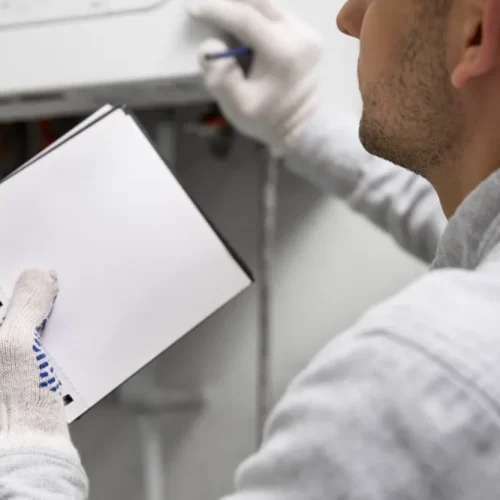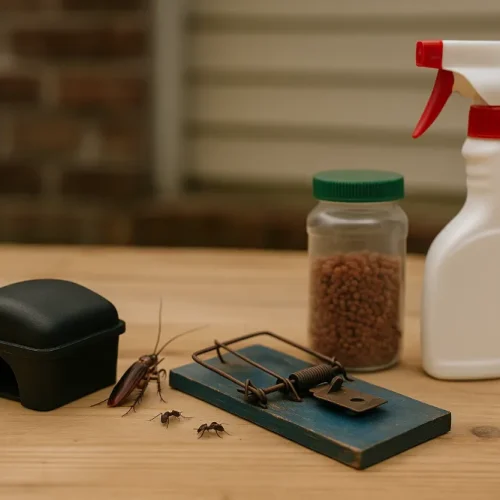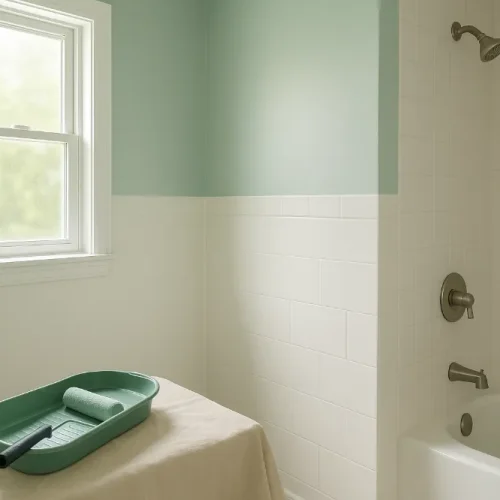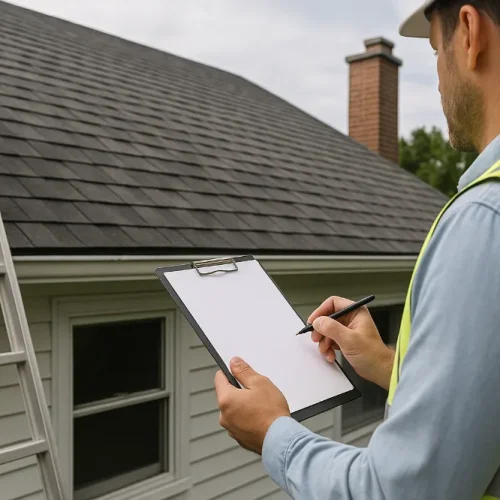
Old paint has a funny way of hiding in plain sight. You walk past it every day, see the same walls and trim, and at some point, your brain just stops paying attention. It becomes background silent, familiar, easy to ignore. But beneath that quiet exterior, aging paint can develop its own problems. It can peel, crack, trap moisture, harbor mildew, or even release low levels of volatile organic compounds as it deteriorates. Over time, old paint goes from being a cosmetic issue to something that can affect your home’s comfort, appearance, and even its safety. Most people don’t notice the subtle signs until the issues become obvious. That’s why learning how to read these early clues matters more than most homeowners realize.
I’ve learned through my own experiences and through the stories of countless homeowners that old paint rarely fails overnight. Instead, it sends out tiny distress signals long before it becomes a major concern. A curling corner here, a shadowy stain there, a weird smell you can’t quite place. And sometimes the signal is even more subtle, like a wall suddenly looking lifeless or refusing to stay clean no matter how much effort you put in. If you’ve ever wondered whether your old paint might be quietly causing problems, this guide will help you interpret those hidden signs with clarity.
Why Old Paint Starts Showing Its Age
Most paint starts degrading gradually due to the breakdown of its chemical components. Exposure to sunlight, humidity, temperature changes, and daily wear slowly reduces the paint’s ability to flex and protect your walls. There’s even a scientific name for one of the processes that affect old paint: photodegradation, which refers to the way ultraviolet light breaks down chemical bonds over time. It’s the same phenomenon that causes outdoor plastics to become brittle. If you’re curious, you can actually read more about it here:
Wikipedia – Photodegradation
Inside the home, paint also deals with cleaning products, moisture, and everyday impacts. In older houses, layers of paint that were applied over the decades don’t always bond well with each other. Oil-based paint beneath latex paint can cause gradual separation as their properties age differently. And, of course, any home built before 1978 may contain older layers of lead-based paint underneath modern coatings. That creates a whole separate category of risk, especially when the older paint begins peeling or crumbling.
Peeling, Flaking, and Bubbling—Your First Big Clues
One of the earliest and easiest signs to spot is peeling. When paint begins to lift off the wall, even in tiny sections, it’s usually because adhesion has failed. The culprit might be moisture sneaking behind the paint film, or the paint simply reaching the limit of what its binders can handle. Peeling often begins around humid areas like windows, bathrooms, and kitchens, but it can happen anywhere the paint has aged past its prime. Flaking is similar but usually appears more brittle. Instead of curling, the paint chips break into sharp, jagged pieces. That brittle texture often means the paint has hardened excessively due to sunlight exposure and lost the flexibility it needs to stretch and adapt to the surface.
Bubbling, on the other hand, tells you something is happening underneath the paint. Moisture is the most common culprit. If a bubble feels soft or squishy when you press it, the underlying wall might still be damp. Even if it feels dry, the bubble signals that something disrupted the paint bond often humidity, improper prep work, or incompatible paint layers. Regardless of the cause, these symptoms are the paint’s way of telling you it cannot protect the wall anymore.
Cracking and the Alligator-Skin Pattern
Cracking can sneak up slowly. At first, you might only see faint lines that appear in certain lighting. Over time, these can expand into deeper cracks or wider networks of fractures. One of the most distinctive patterns is alligatoring a series of cracks that resemble reptile skin. It’s usually a sign that the paint film has aged to the point where it becomes rigid and unable to adjust to temperature shifts.
Alligatoring often points to very old paint or a mismatch between paint types used across different layers. Once this pattern shows up, there isn’t much that can be done short of stripping or thoroughly sanding the area before repainting. Attempting to paint over it almost always leads to a repeat pattern later.
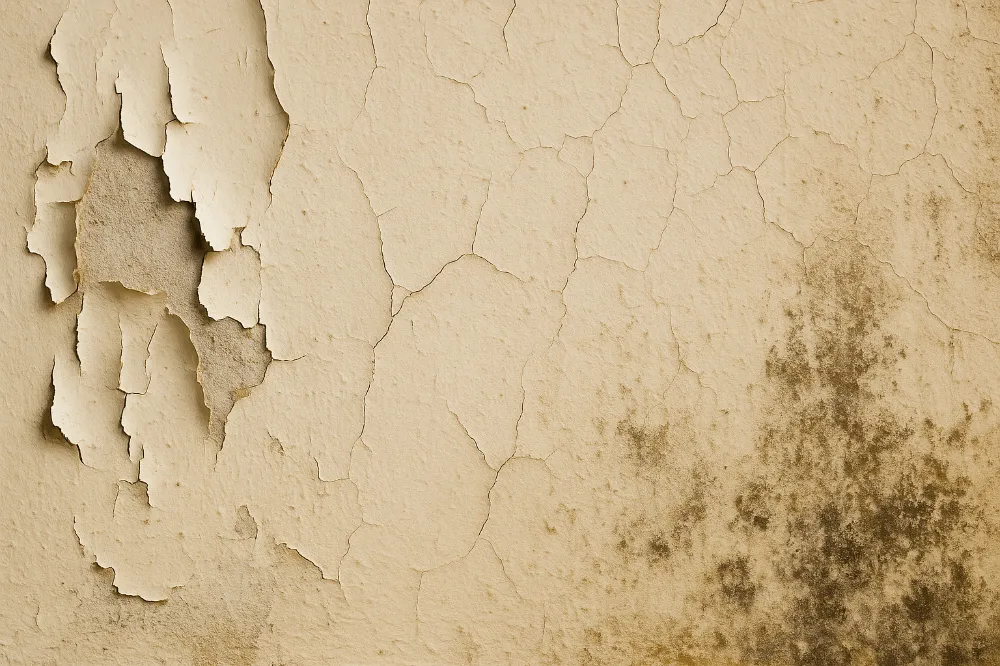
Discoloration, Yellowing, and Stains You Can’t Wash Away
When old paint begins to discolor, it can happen subtly or dramatically. Yellowing is a common issue with older oil-based paints, especially in areas with poor sunlight exposure. You may notice it behind furniture or in corners where natural light rarely reaches. Sometimes the discoloration appears as patchy darkening or dull spots that look dirty even when they’re clean.
Water stains are more serious. Brownish marks, shadowy streaks, or faint rings often indicate hidden moisture intrusions. Over time, moisture can bleed through paint and create discoloration that won’t wash off because it has chemically affected the surface. These stains are often the first visible sign of a larger issue like a small roof leak or slow plumbing drip. Discoloration can also be environmental. Paint that has lost its protective finish absorbs pollutants, smoke, cooking grease, and household residues more easily. That’s why older kitchen walls sometimes feel “greasy” even after cleaning.
The Chalky Residue That Appears When You Touch the Wall
One of the most overlooked signs of paint deterioration is chalking. When the paint starts to break down, it forms a powder-like substance on the surface. If you rub your hand along the wall and see a chalky film on your skin, that’s exactly what’s happening.
Chalking indicates that the binder in the paint has broken down to the point where pigment particles separate from the film. As this happens, the paint becomes dull, dusty, and more prone to absorbing dirt. Chalking usually means the wall needs deep cleaning, priming, and repainting otherwise, new paint simply won’t adhere properly.
Mold and Mildew That Keep Coming Back
Old paint, especially the older flat formulas, isn’t very good at resisting moisture. Bathrooms, laundry rooms, and basements are often the first to show mold and mildew spots. If you clean the wall and the mildew returns quickly, it’s usually because moisture has penetrated the porous paint surface.
Modern paints include mildewcides, but older ones didn’t always have those additives. Repainting with the right type of paint is often the only long-term solution to recurring mildew problems. But before you repaint, it’s important to figure out where the moisture is coming from, because paint can only do so much if humidity remains high.
Sticky, Soft, or Tacky Paint Surfaces
When old paint feels sticky long after it should have dried, something is wrong with the paint film. Sometimes humidity causes old paint to re-soften. Other times, incompatible paint layers never bonded correctly in the first place. Sticky paint often attracts dust and dirt and becomes nearly impossible to keep clean. This isn’t a surface-level issue stickiness means the paint is no longer chemically stable. A complete repaint, often following sanding or priming, is the only real fix.
Strange Odors Coming From Painted Walls
It might sound strange, but old paint can absolutely cause odd smells. Sometimes it’s a musty scent caused by moisture. Other times the odor may resemble chemicals or sourness, especially on trim painted with old oil-based formulas. As paint deteriorates, it may release residual volatile organic compounds (VOCs), especially when humidity levels rise. Moisture trapped behind the paint can also create odors that seep through the surface. If a wall or trim area smells “off” even after cleaning, the old paint may be the culprit.
When Cleaning Stops Working
A wall that refuses to stay clean is often a wall coated in old, worn-out paint. Instead of letting dirt wipe away, the paint absorbs it or smears when cleaned. Sometimes patches appear shinier or duller after wiping because the protective film is gone. When cleaning becomes more damaging than helpful, the paint is usually past its lifespan.
Lead Paint Risks in Older Homes
Any home built before 1978 may contain layers of lead-based paint underneath newer coatings. When old paint begins peeling, chipping, or shedding dust, those older layers may become exposed. Lead dust is especially harmful to children, which is why deteriorating paint in older homes should never be ignored. If you ever suspect lead in deteriorating paint, testing is essential before sanding or scraping anything.
Walls That Feel Damp or Oddly Textured
Old paint is often the first layer to alert you to hidden moisture problems. If the wall feels cool, damp, soft, or oddly textured, moisture might be trapped beneath the paint. Over time, this can cause the paint to bubble, peel, or warp. Sometimes the issue is a plumbing problem. Other times it’s poor insulation or condensation. The paint isn’t the problem but it reveals the real problem lurking under the surface.
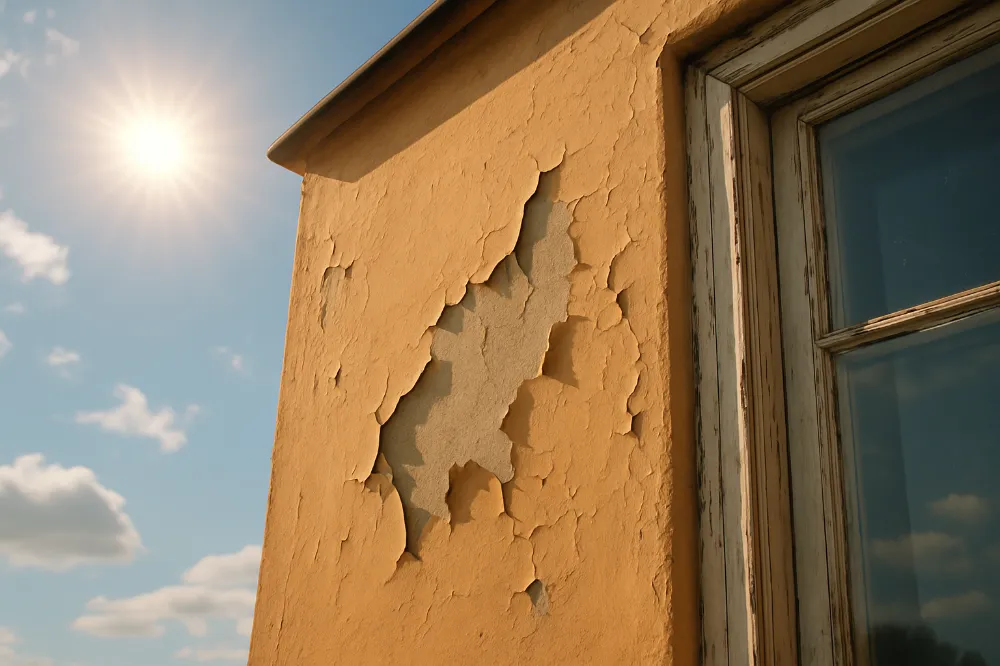
Walls That Look Tired Even After Cleaning
Sometimes the biggest sign of aging paint is just a general sense of dullness. The wall loses its vibrancy, reflects light unevenly, or looks lifeless no matter how many times you clean it. That’s usually the paint telling you it has reached the end of its useful life.
Final Thoughts
Old paint may be quiet, but it’s rarely subtle once you learn how to read the signs. Peeling, cracking, discoloration, odors, chalking, and stubborn mildew all point to paint that has lost its ability to protect your home. Paying attention to these early clues can save you from bigger issues down the line like hidden moisture damage, poor indoor air quality, or expensive repairs. Repainting isn’t just a facelift it’s an investment in your home’s health and longevity. And when you combine fresh paint with proper surface prep and high-quality materials, your home can look and feel new again for years to come.
FAQs
You might see peeling, cracking, bubbling, discoloration, chalky residue, or surfaces that won’t stay clean.
Moisture, poor adhesion, aging binders, or incompatible layers like latex over old oil-based paint can lead to peeling.
Aging paint, especially oil-based formulas, can yellow due to oxidation, low light exposure, or environmental residue buildup.
Chalking indicates the paint is breaking down and losing its binder, causing pigment to turn into powder on the surface.
Yes. Deteriorating paint can release odors, especially when moisture or old oil-based layers break down.
Old paint absorbs moisture more easily, making it harder to resist mildew in humid spaces like bathrooms or basements.
Most bubbling happens from moisture trapped behind the surface, but it can also occur from poor prep or painting over glossy layers.
Homes built before 1978 should be tested. Peeling, chipping, or dusty paint may expose older lead-based layers.
Yes. Deteriorating paint may release fine particles or leftover VOCs, especially in poorly ventilated areas.
If you see consistent peeling, cracking, stains, chalking, mildew, or overall dullness, the paint has likely reached its lifespan.



